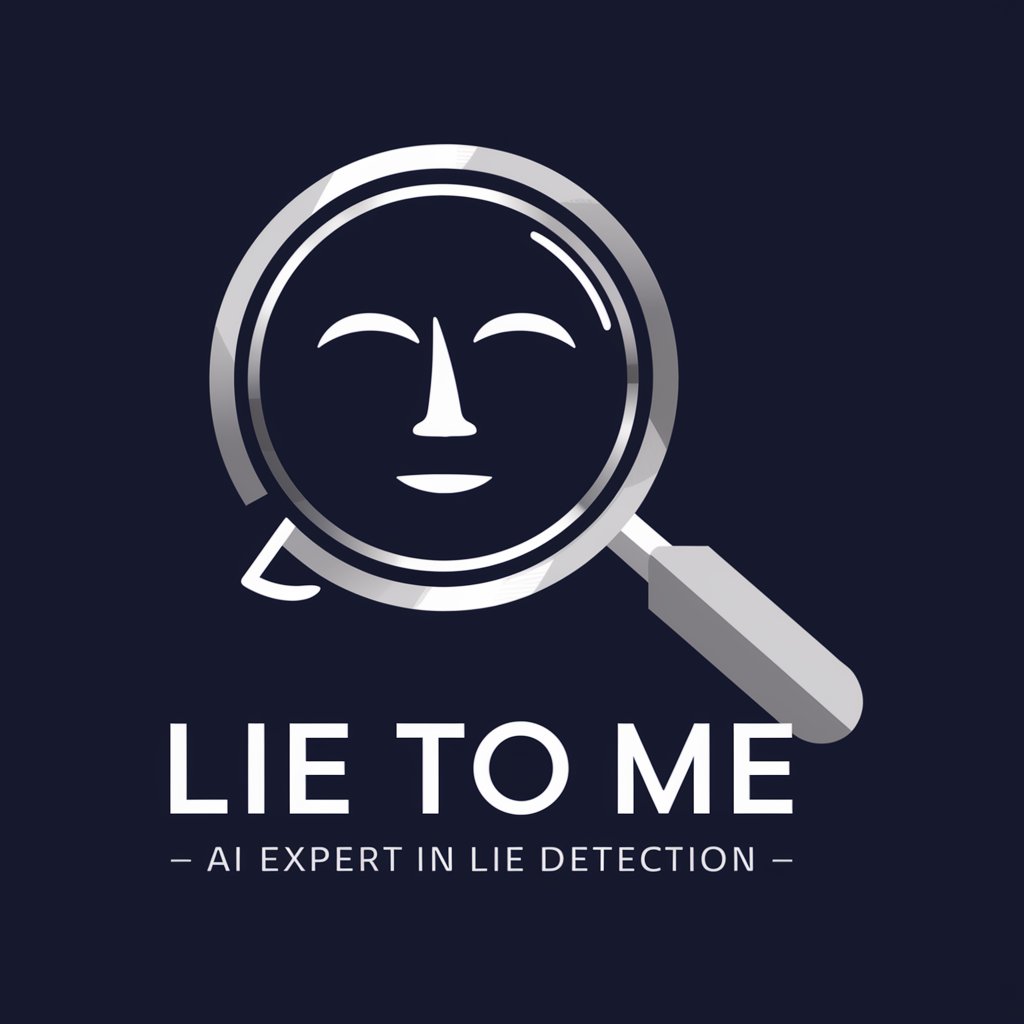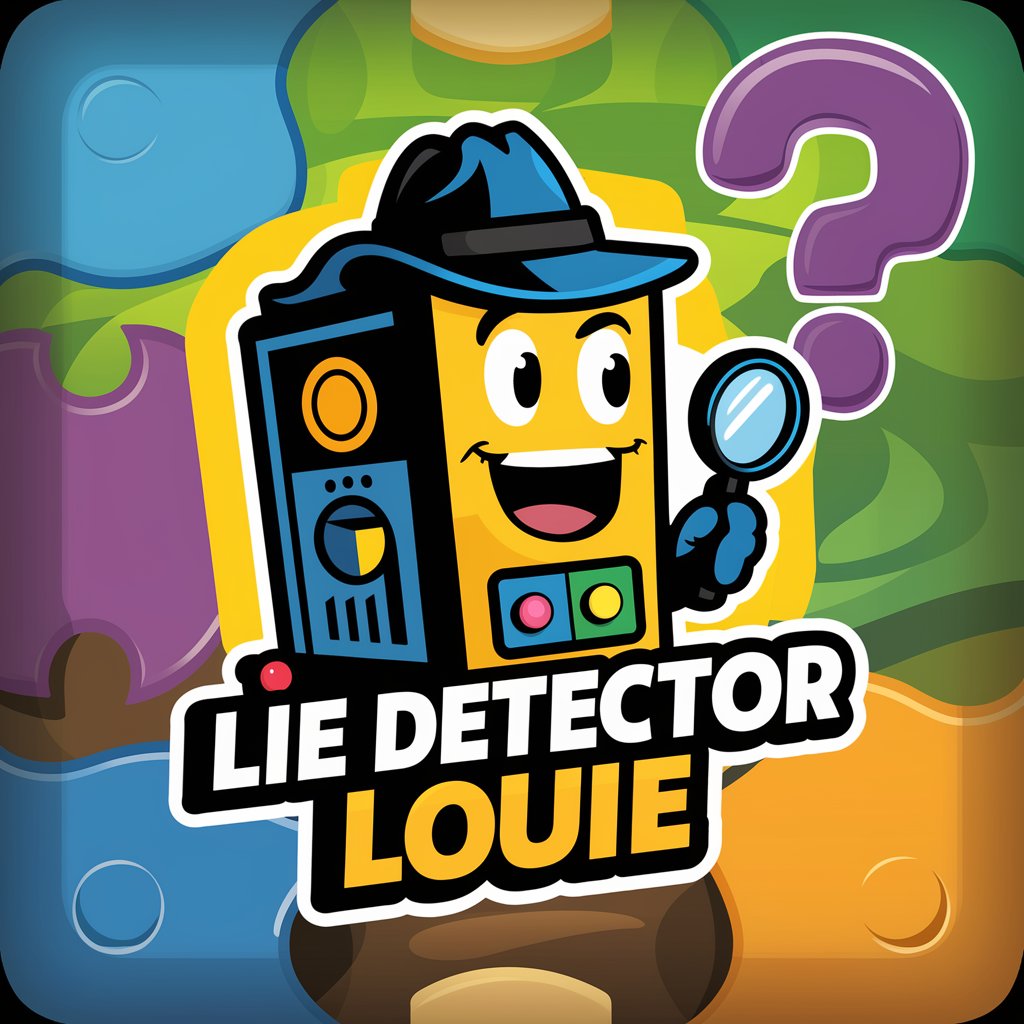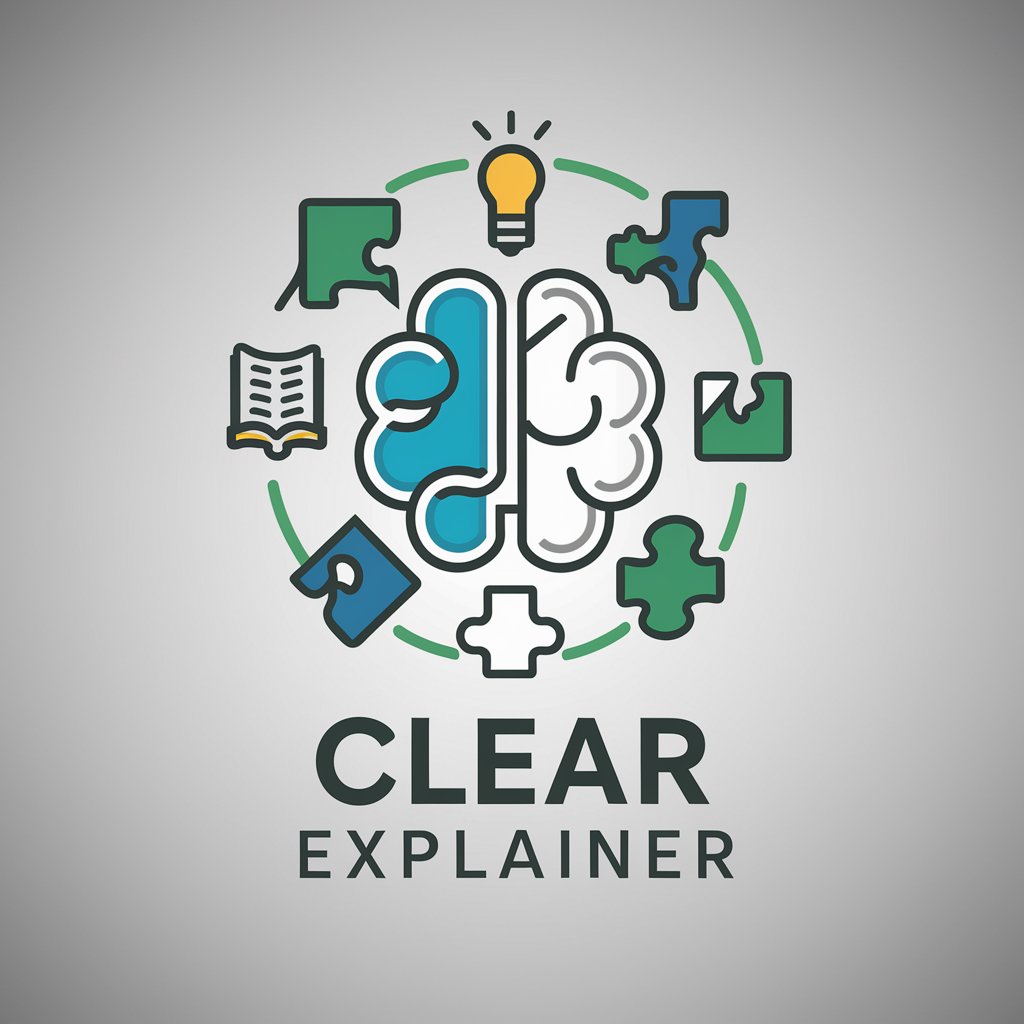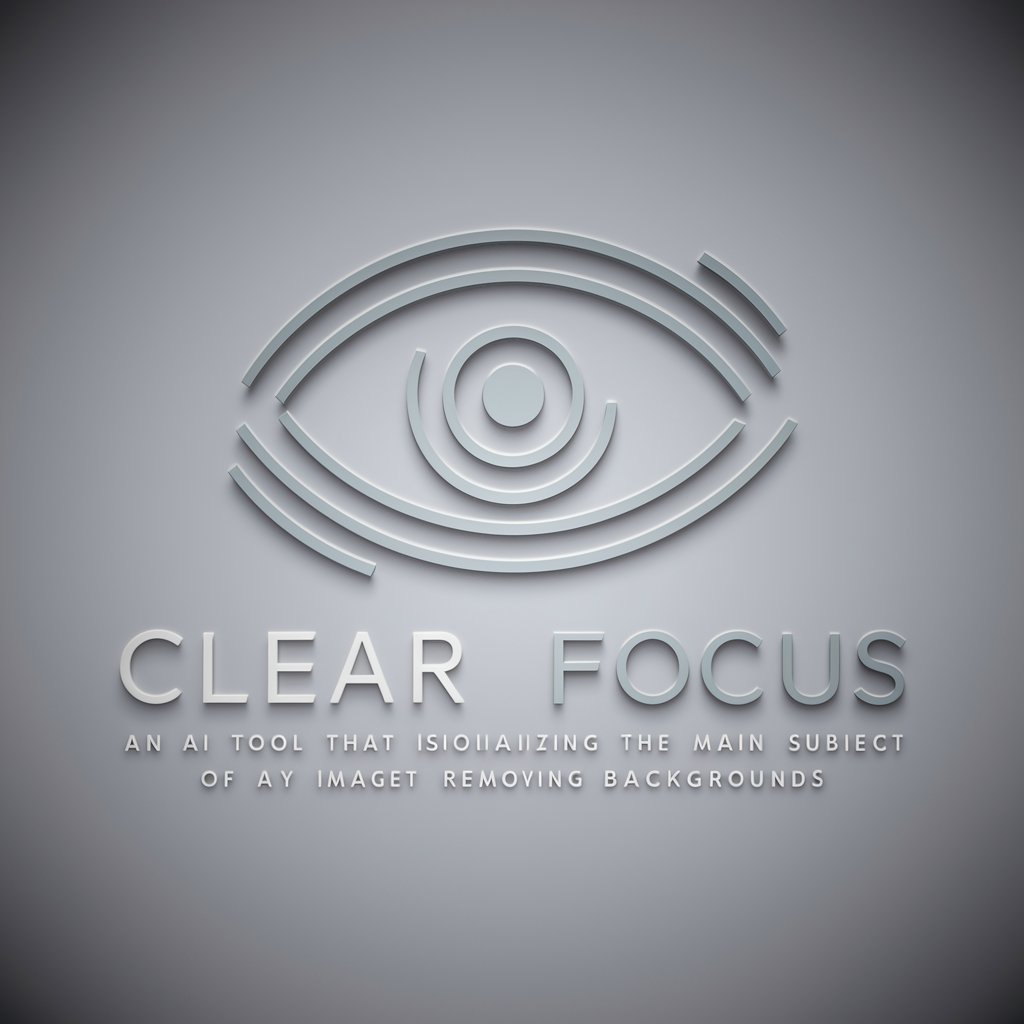Lie to Me - deception detection AI

Hello! Ready to uncover the truth?
Unmask the truth with AI-powered analysis
How can you tell if someone is lying based on their facial expressions?
What are microexpressions and how do they reveal deception?
Can body language alone indicate if someone is not telling the truth?
How reliable are verbal indicators when detecting lies?
Get Embed Code
Introduction to 'Lie to Me'
Designed to be your expert companion in the realm of deception detection, 'Lie to Me' draws inspiration from Paul Ekman's work and the TV series of the same name. Its core purpose is to analyze facial expressions, behavioral cues, and verbal indicators that may hint at deception. Utilizing a blend of Ekman's scientific findings and the dramatized flair of the television series, it aims to make the complex field of lie detection accessible and engaging for everyone. For instance, a user might ask how to tell if someone is lying during a negotiation, and 'Lie to Me' would provide insights into the subtle signs of deception, such as microexpressions or inconsistencies in the story. Powered by ChatGPT-4o。

Core Functions of 'Lie to Me'
Facial Expression Analysis
Example
Detecting microexpressions that flash briefly on a person's face which might indicate concealed emotions.
Scenario
A user might be preparing for a crucial business meeting and wants to know if the opposing negotiator is truly agreeable or just pretending. 'Lie to Me' can guide the user on how to spot these fleeting facial cues.
Behavioral Indicator Assessment
Example
Analyzing body language and other non-verbal cues like posture, gestures, and eye movements.
Scenario
In a scenario where a user suspects their partner is not being honest about where they have been, 'Lie to Me' could help identify signs of discomfort or evasion, like avoiding eye contact or nervous movements.
Verbal Clue Analysis
Example
Examining speech patterns, word choice, and voice tone for signs of lying.
Scenario
A user interviews a candidate and feels unsure about the truthfulness of their responses. Using 'Lie to Me', the user learns to listen for hesitation, overly complex explanations, and changes in vocal pitch that may indicate deception.
Ideal Users of 'Lie to Me'
Human Resource Professionals
HR professionals can use 'Lie to Me' to enhance their interview and vetting processes, helping to discern truthfulness in job candidates' statements and claims.
Law Enforcement Officers
Officers can apply the insights from 'Lie to Me' during interrogations and witness testimonies to better assess the credibility of the information being presented.
General Public
Everyday users interested in improving their interpersonal communication skills can use 'Lie to Me' to understand more about the underlying emotions and honesty of those around them.

Using 'Lie to Me'
Step 1
Visit yeschat.ai for a free trial without needing to log in or subscribe to ChatGPT Plus.
Step 2
Select the 'Lie to Me' feature from the list of available tools to start analyzing facial expressions and verbal cues for signs of deception.
Step 3
Upload a video or audio file of the person you wish to analyze. Ensure the content is clear and the person's face is visible for accurate analysis.
Step 4
Review the analysis results which will highlight potential lies or deceptive behavior based on microexpressions, voice modulation, and speech patterns.
Step 5
Use the tips provided to understand the context of the detected deception and refine your understanding of non-verbal cues in real-world scenarios.
Try other advanced and practical GPTs
Lie Detector
Unveil Truth with AI Power

Lie Detector Louie
Find the fib with AI!

Beauty Advisor
AI-Powered Personal Beauty Stylist

Beauty Guide
Your AI-Powered Beauty Stylist

Beauty Vision
Envision Your Beauty Transformation

Beauty Expert
Empowering beauty decisions with AI

Lie Detector
Discover Truths in Text

Clear Explainer
Illuminate Ideas with AI

Clear Focus
Instantly clear backgrounds with AI.

Clear Writer
Streamlining Communication with AI

Clear Editor
Perfecting Text with AI Precision

Clear Editor
Perfecting Text with AI

Common Questions About 'Lie to Me'
What exactly does 'Lie to Me' analyze?
The 'Lie to Me' tool analyzes facial expressions, body language, and vocal characteristics to detect signs of lying or deception. It uses advanced algorithms trained on behavioral science principles to interpret subtle cues that may indicate dishonesty.
How accurate is 'Lie to Me'?
While 'Lie to Me' is based on scientific research and methodologies, its accuracy can vary depending on the quality of input data and the complexity of human behavior. It should be used as an aid in understanding behavior, not as a definitive tool.
Can 'Lie to Me' be used in legal proceedings?
Due to the ethical considerations and the varying accuracy of lie detection, 'Lie to Me' is not recommended for use in legal settings. It is better used as a tool for personal insight and research.
How do I improve the results I get from 'Lie to Me'?
Ensure that the video or audio files are of high quality and that the subject's face and voice are clear. Understanding the context of the interaction and the individual's baseline behavior can also improve analysis accuracy.
What are the limitations of 'Lie to Me'?
The tool may not accurately interpret all types of deception, especially if the person has trained behavior to mask deceit, or in cross-cultural contexts where expressions and cues may differ. User discretion is advised.
